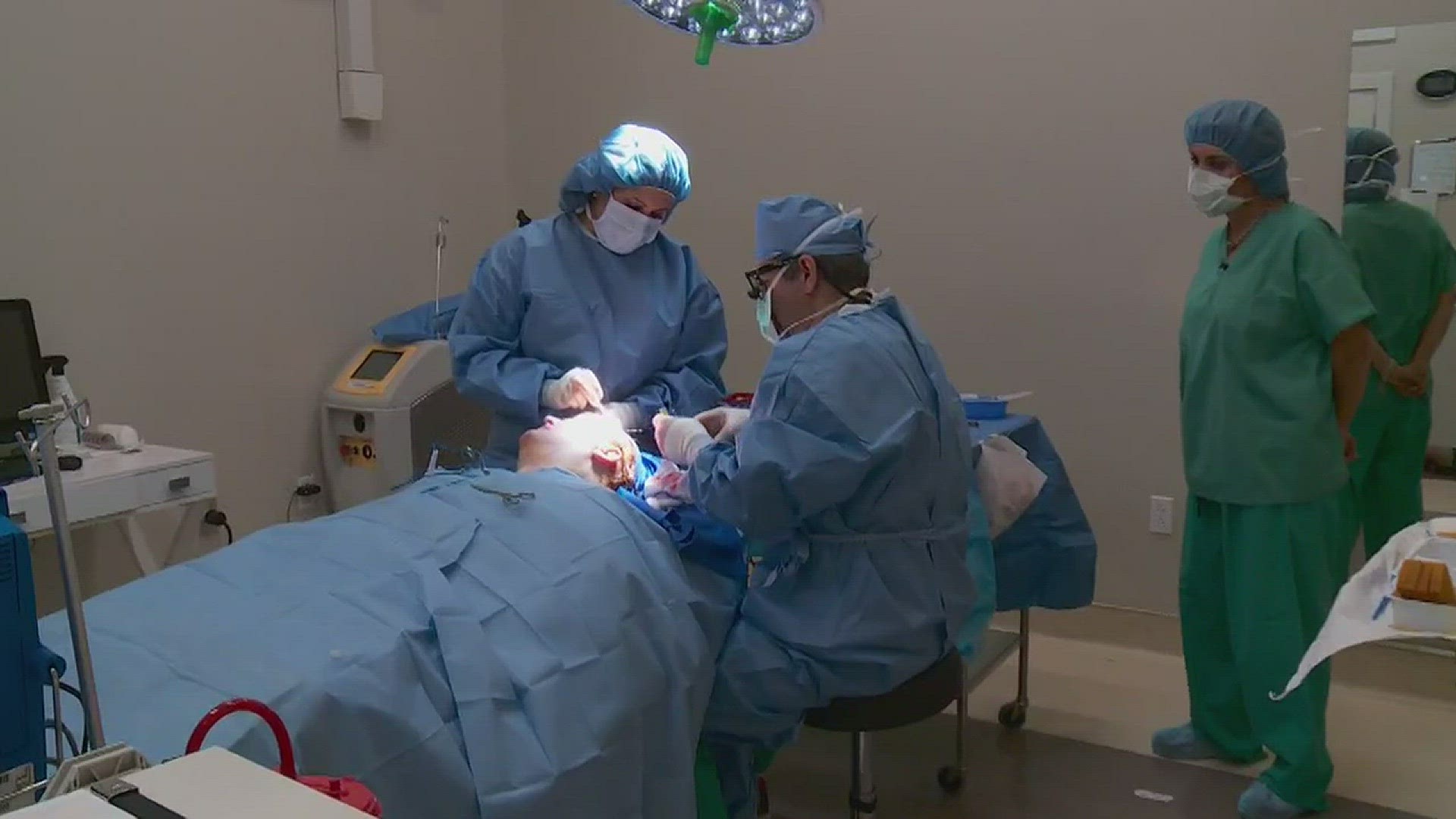Plastic surgeons are noticing a trend. Patients want the benefit of surgical procedures without the risk of being put to sleep.
At 61 years of age, because of her fair complexion, Shelley Lengsfield's skin had more sun damage and cancers than others her age.
"I grew up in San Diego. I've had more sunburns than I can count. I looked in the mirror and after I'd had several facials and I thought my skin can not look any better," said Lengsfield.
So she turned to plastic surgeon Dr. Kamran Khoobehi but with one major condition.
"I did not want to do general. I just, I mean, I don't think you should go under general, for myself you know, unless you have to," said Lengsfield of anesthesia.
So last August, Shelley had a lower face and neck lift while completely awake.
"It is not cutting corner. It is same procedure, exact same thing, that is done under general versus local," explained Dr. Khoobehi, a plastic surgeon in Metairie and New Orleans, who is also in charge of the aesthetic section for training medical residents at LSU Health Sciences Center.
Unlike some local anesthesia facelifts of the past, it's not just skin that is tightened. The tissue underneath is lifted so there's muscle tightening too, giving a natural look. The recovery is faster without general anesthesia nausea, and there is less bruising.
Here's another advantage of the patient being awake. If the patient is asleep, her blood pressure is low and when she wakes up it increases. That puts her at higher risk of getting a hematoma or a bubble, a pooling of blood under the skin that would have to be removed. By keeping the patient awake, there's more of a steady blood pressure and Dr. Khoobehi's patients have not had hematomas.
Dr. Khoobehi also uses a safer way to deliver local anesthesia, called tumescence. Using a pump, the numbing medicines are delivered through a cannula, or tube, like in liposuction, making the separation of the face layers easier too.
"What it does, gives you opportunity to use higher dose lidocaine without the toxicity of it," said Dr. Khoobehi.
President of the American Society of Plastic Surgeons says this method is safe and effective but should be done by a doctor, board certified with its organization. Patients should be screened to make sure they can tolerate the sounds, smells and pulling they will be completely aware of in the O.R.
"There's many things to consider, including someone's medical health, someone's level of anxiety, someone's level of pain tolerance," explained Dr. David H. Song, President of the American Society of Plastic Surgeons and Vice Chairman, Department of Surgery, Chief, Section of Plastic and Reconstructive Surgery and Director, Residency Training Program at The University of Chicago Medicine.
One of Dr. Khoobehi's patients changed her mind just before he began. But 200 others have gone through it with no regrets. Dr. Khoobehi also transferred a little fat from Shelley's abdomen to fill lost volume, but her forehead, eyes, lips and upper cheeks were untouched, and still she thinks 15 years have been erased.
"My dermatologist was very, had reservations about me doing this and when I went to see her, she was like blown away," said Lengsfield.
With swelling, but no bruising, Shelley was back at work in 10 days.
The local anesthesia facelift costs less because there is no anesthesia or surgery center fees.
It is done in a surgery suite in the doctor's office with complete monitoring of vital signs.

